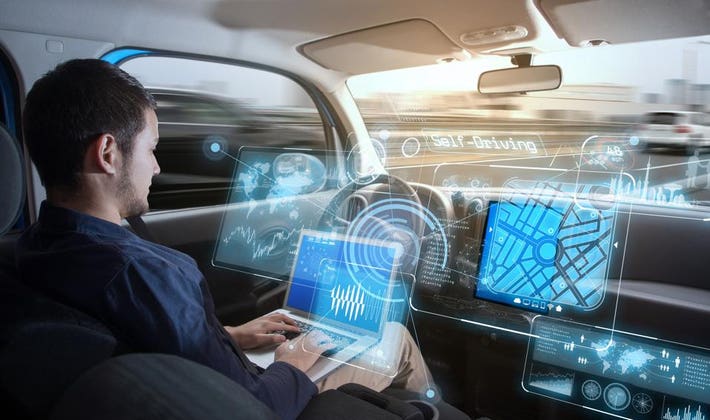The rise of electric vehicles (EVs) has been a transformative force in the automotive industry. However, as the demand for EVs continues to grow, so do the challenges associated with their production and distribution. One of the most significant hurdles faced by manufacturers today is dealing with EV supply chain bottlenecks. These bottlenecks can impede the progress of the industry and affect everyone from manufacturers to consumers.
Understanding the complexities of the EV supply chain is crucial for identifying solutions that can help streamline processes and ensure that the demand for EVs is met efficiently. In this article, we will explore the various factors contributing to these bottlenecks and discuss potential strategies for overcoming them.

Understanding the EV Supply Chain
The EV supply chain is a complex network that involves the procurement of raw materials, manufacturing of components, assembly, and distribution. Each stage of this process can encounter bottlenecks, which can hinder the overall efficiency and increase costs. The supply chain must be carefully managed to ensure the timely production and delivery of EVs.
Key Components of the EV Supply Chain
The primary components of the EV supply chain include raw materials such as lithium, cobalt, and nickel, which are essential for battery production. Additionally, components like electric motors, power electronics, and vehicle software play a crucial role. Any disruption in the supply of these materials or components can lead to significant delays.
Impact of Global Events on the Supply Chain
Global events such as the COVID-19 pandemic have had a profound impact on the EV supply chain. Factory shutdowns, transportation restrictions, and labor shortages have all contributed to delays and increased costs. Moreover, geopolitical tensions and trade restrictions can further complicate the supply chain, affecting the availability of essential materials.
Challenges in the EV Supply Chain
Material Shortages
One of the most pressing challenges in the EV supply chain is the shortage of critical materials. The demand for lithium-ion batteries has surged, leading to a strain on the supply of lithium and other key elements. This shortage can result in increased prices and delays in production.
Manufacturing Constraints
Manufacturing constraints are another significant bottleneck. The production of EV components requires specialized facilities and skilled labor, both of which may be in short supply. Scaling up production capacity to meet the growing demand for EVs is a challenge that manufacturers must address.
Logistical Challenges
Efficient logistics are essential for the smooth operation of the EV supply chain. However, the transportation of raw materials and finished products can be hampered by infrastructure limitations, regulatory hurdles, and environmental concerns. These logistical challenges can lead to delays and increased costs.
Solutions to Overcome EV Supply Chain Bottlenecks
Investing in Sustainable Mining
To address material shortages, investing in sustainable mining practices is crucial. Companies can work with governments and organizations to ensure responsible sourcing of raw materials. This approach not only helps secure a stable supply but also minimizes environmental impact.
Enhancing Manufacturing Capabilities
Enhancing manufacturing capabilities is essential for overcoming EV supply chain bottlenecks. Companies can invest in advanced manufacturing technologies, automation, and workforce training to increase production efficiency and capacity.
Optimizing Logistics and Distribution
Optimizing logistics and distribution can help reduce delays and costs. Implementing advanced tracking systems, improving transportation infrastructure, and collaborating with logistics partners can enhance the efficiency of the supply chain.
The Role of Technology in Addressing Bottlenecks
Digitalization and Automation
Digitalization and automation can play a significant role in streamlining the EV supply chain. By leveraging technologies such as IoT, AI, and blockchain, companies can improve visibility, track inventory in real-time, and automate processes to reduce errors and increase efficiency.
Development of Battery Technologies
The development of new battery technologies can help alleviate some of the pressures on the EV supply chain. Innovations in battery chemistry, such as solid-state batteries, can reduce reliance on scarce materials and enhance the performance and safety of EVs.
Future Outlook for the EV Supply Chain
Growing Demand for EVs
The demand for EVs is expected to continue growing as more consumers and governments prioritize sustainability and carbon reduction. To meet this demand, the EV supply chain must become more resilient and adaptable.
Collaboration and Partnerships
Collaboration and partnerships among industry stakeholders can help address EV supply chain bottlenecks. By working together, companies can share resources, knowledge, and best practices to overcome challenges and drive innovation.
Regulatory Support
Government policies and incentives can provide crucial support for the EV supply chain. By promoting sustainable practices and investing in infrastructure, governments can help create a more robust and efficient supply chain.
Conclusion
The challenges posed by EV supply chain bottlenecks are significant, but they are not insurmountable. By understanding the complexities of the supply chain, investing in sustainable practices, and leveraging technology, the industry can overcome these obstacles and continue to grow. The future of electric vehicles is bright, and with the right strategies in place, the EV supply chain can support this growth and contribute to a more sustainable world.

FAQs
What are the main bottlenecks in the EV supply chain?
The main bottlenecks in the EV supply chain include material shortages, manufacturing constraints, and logistical challenges. These issues can lead to delays and increased costs in the production and distribution of electric vehicles.
How can technology help in overcoming supply chain bottlenecks?
Technology can help overcome supply chain bottlenecks by improving visibility, tracking inventory in real-time, and automating processes. Digitalization and automation can increase efficiency and reduce errors, making the supply chain more resilient.
What strategies can manufacturers adopt to address supply chain challenges?
Manufacturers can adopt strategies such as investing in sustainable mining, enhancing manufacturing capabilities, and optimizing logistics and distribution. Collaboration with industry stakeholders and leveraging technology can also help address supply chain challenges.
For more detailed insights on the EV supply chain, you can explore the comprehensive resources available on Electric Vehicles.





